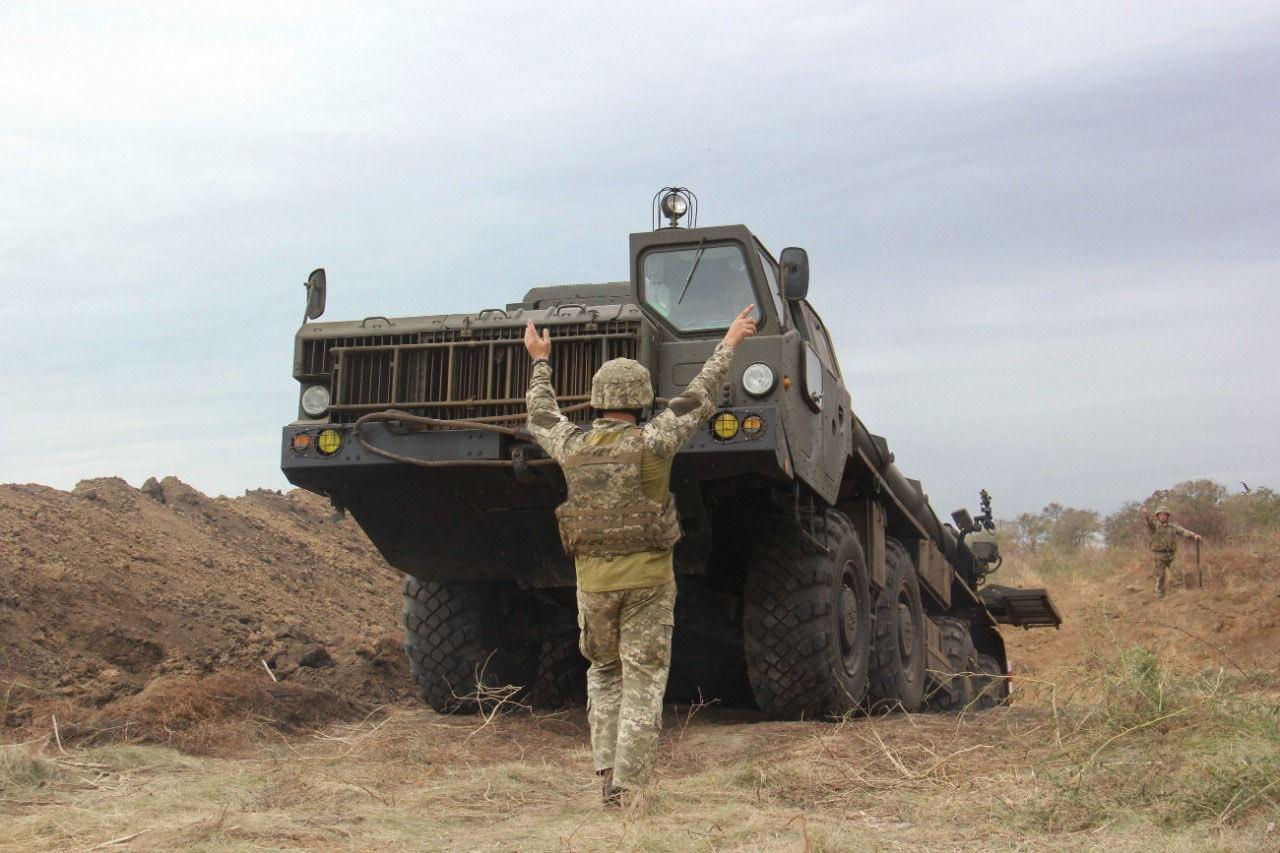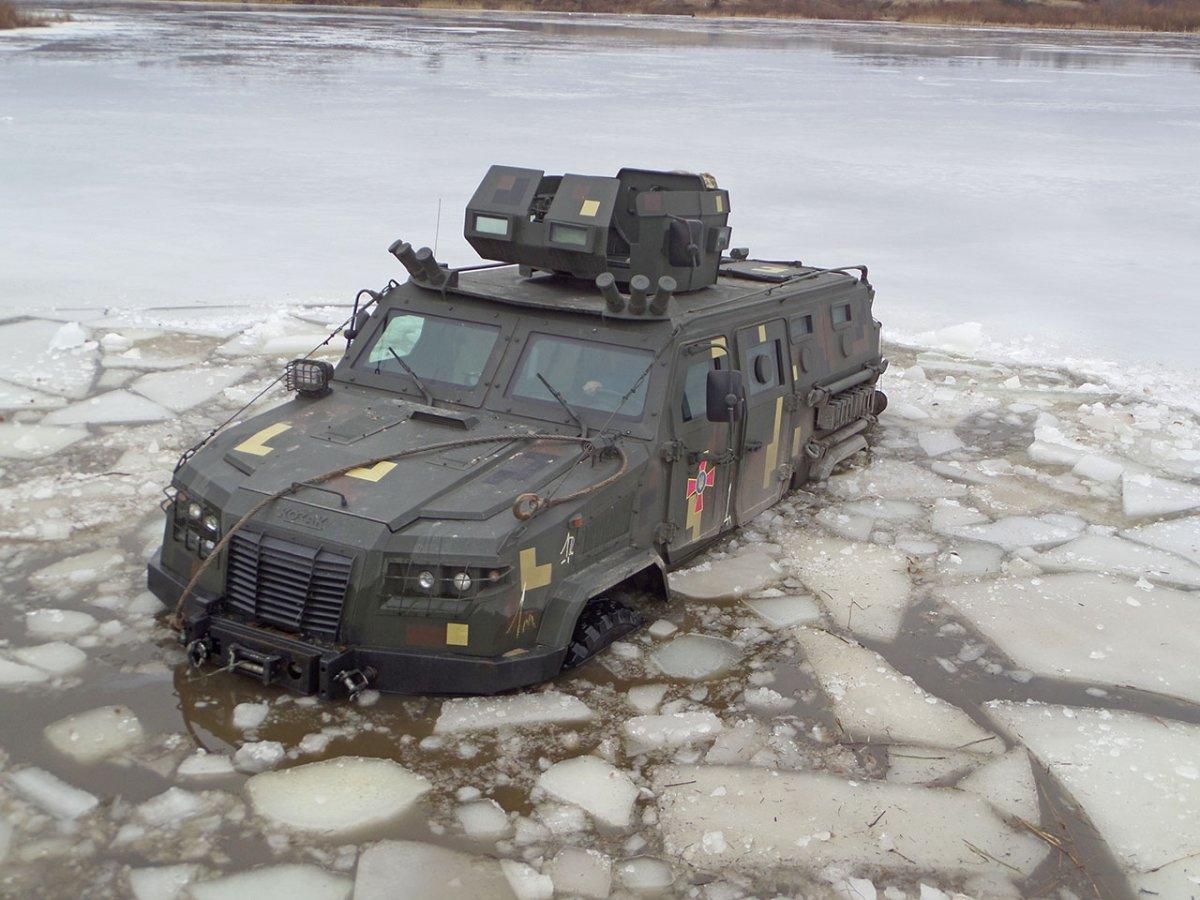Which Ukraine-made weapons most effective on battlefields? Air defense systems, UAVs, armoured vehicles ...
The New Voice of Ukraine (NV) has spoken to a number of military experts for listing the most effective Ukraine-made weapon systems that have proven themselves on the battlefield.
Caliber.Az reprints the list of weapons and equipment outlined by NV.
Neptune anti-ship missile system
The Neptune missile’s moment of glory came on April 13, when it was used to sink the cruiser Moskva – the flagship of the Russian Black Sea Fleet. Despite the Kremlin’s false claim that the ship sank due to accidental onboard ammo detonation, Neptune instantly became a global sensation, with The Washington Post highlighting the effectiveness of these Ukrainian missiles.
“Several countries became interested in (procuring) Neptune missiles after the sinking of the Moskva,” Head of the Office of the President of Ukraine, Andriy Yermak, said in a Telegram message on April 17.
“The bane of the Moskva” has been in service since August 2020 and is designed to strike a wide range of surface ships. The missile travels at 900 km/h, has a range of 280 kilometres, flies at very low altitudes (3-10 meters), and executes evasive manoeuvres during its approach. The 150-kilogram warhead can sink vessels of up to 5,000 tons in displacement.
The entire system includes a mobile command module, six launchers and loaders, with up to 72 missiles in stock. Neptune’s deployment time is under 10 minutes.
Stugna-P Anti-Tank Guided Missile (ATGM)
The Stugna-P is a veritable veteran of the wider Russia-Ukraine conflict. These ATGMs were used in battles for strategic airports in Donetsk and Luhansk, back in 2014–2015. AFU and Territorial Defense Forces (TDF) routinely used Stugnas during the ongoing full-scale Russian invasion. Notably, at least two Russian Ka-52 attack helicopters were downed using these weapons. Stugna-P has also been widely used in urban warfare across the country.
The system launches 130mm guided missiles, with several warhead options: tandem charge, thermobaric, or high-explosive. The basic configuration includes a tripod-mounted launcher (which can be operated remotely), the missile container, and the guidance command module. The missiles have the semi-automatic lock-on capability, and can also be manually guided by the operator. The entire setup is a two-person operation and can be mounted on unconventional platforms, e.g.: pickup trucks.
Stugna-P has an effective range of up to 5.5 kilometres during the daytime and 3 kilometres at night. The system has been in service since 2011.
Vilkha/Vilkha-M tactical multiple-launch rocket system (MLRS)
The Vilkha has been used to fire 300mm rocket munitions at invading Russian forces since the very first days of the war. The opening week alone saw around 50 Vilkha strikes at enemy air defences, ECM systems, and armoured vehicles.
Vilkha’s development was based on the Soviet-era Smerch MLRS. It launches 12 rockets in 48 seconds, has an effective range of up to 70 kilometres (130 kilometres for the Vlikha-M) and has a Circular Error Probable (CEP, or accuracy) of 10 meters. The system can strike both ground and surface naval vehicles. Individual rockets have satellite guidance modules, and carry 250-kilogram warheads, with several options available.
The Vilkha has been in service since 2018.

Bohdana self-propelled howitzer
The Bohdana howitzer was first used in June 2022 to liberate Snake Island in the Black Sea from Russian troops. This is the first Ukraine-designed artillery system compatible with NATO 155mm artillery rounds.
The howitzer is technically still not in service, as it’s yet to complete all of the necessary certification tests, but military expediency has seen them already deployed to the battlefield.
The Bohdana uses a military truck chassis with an armoured cockpit and is operated by a crew of five. Targeting and loading are automated, allowing the howitzer to fire six rounds per minute. Its effective range is 42 kilometres, or up to 50 kilometres with rocket-assisted shells.
T-84 Oplot MBT
The Oplot is a Ukrainian modification of the Soviet-designed T-84 main battle tank and has been in service since 2000.
The Oplot’s defences were upgraded with reactive armour, protecting the tank from cumulative and armour-piercing charges, in addition to anti-radar coating. Its targeting is augmented with thermal visors, electronic and optical countermeasures, and navigation modules.
The Oplot is armed with a 125mm main gun, a 7.62mm twin machine gun, and a 12.7mm anti-aircraft machine gun. Furthermore, the tank carries Ukrainian Kombat laser-guided missiles, which help with targets like other tanks, helicopters, machine gun nests, and other ground and air targets up to 5 kilometres away. Each Oplot costs around $4 million.
The tank saw its first combat deployment in May 2022.
Kozak-2M1 APC
The 2M1 is the newest armoured personnel carrier (APC) in the Kozak family, in service since 2020. Kozak can securely transport up to nine people and is in active use on the frontlines.
The Kozak-2M1 uses a frameless solid hull, mounted atop independent suspension, allowing for smooth transit over rugged terrain at high speeds. The APC is armed with the Turkish-Ukrainian Aselsan combat module, supporting a range of machine guns. The bulk of its firepower lies in the Ukrainian Barrier ATGM system, which can fire up to four laser-guided 130mm missiles. Target acquisition can be done in poor weather conditions, thanks to a selection of optical and infrared targeting systems.

BTR-4 IFV
The BTR-4 is an 8x8 amphibious wheeled infantry fighting vehicle (IFV), in service since 2011, which has seen action since the very beginning of the Russian invasion in 2014. These vehicles were also deployed to defend Mariupol and Kharkiv during ongoing Russia’s full-scale invasion of Ukraine.
The IFV is designed for infantry transportation and close fire support, including in areas of WMD usage. It has an air-tight modular frame, providing NATO Class II protection, and shielding people inside from bullets, shrapnel, and radiation.
The BTR-4 can field a variety of weapon systems, including 30mm autocannons, 7.62mm twin machine guns, ATGMs, and 30mm automatic grenade launchers. Each IFV costs up to $1.6 million.
Zoopark-2 ALR
The Zoopark-2 artillery locating radar (ALR) has been in service since 2003 and is designed to detect incoming enemy mortar, artillery, MLRS, and ballistic missile fire, tracking them and predicting impact locations. The ALR can also sweep the airspace for hostile UAVs, and remains operational in poor weather conditions.
The Zoopark-2 can detect incoming mortar fire from 20 kilometres, artillery from 23 kilometres, MLRS from 38 kilometres, and tactical ballistic missiles from 55 kilometres.
Bukovel UAV countermeasure system
The Bukovel is an anti-drone electronic warfare system, in service since 2016. It can detect enemy UAVs, and jam their control and navigation (GPS, GLONASS, etc.) systems. The Bukovel can be mounted across a variety of chassis, including ordinary trucks – via a tripod.
It boasts a short deployment time of 2 minutes and can detect small reconnaissance UAVs (like the Russian Orlan-10) from up to 100 kilometres, jamming them from a distance of 20 kilometres.
A1-CM Furia UAV
Furia is a reconnaissance and fire control drone, in service since 2020, although its early prototypes have been in use since 2014, augmenting Ukrainian artillery. The drone has since been adopted by the National Guard and SBU security service.
Each system includes three drones, a ground control-and-analysis station, a set of communication antennae, and other auxiliary equipment and software. Furia can operate under radio silence and uses secure, tampering-resistant communication channels. It identifies and geolocates targets with an accuracy of 20 meters, providing fire correction for several artillery batteries at once.
Furia’s total flight range is around 200 kilometres, with an operational range of up to 50 kilometres and a top speed of 130 km/h. Its flight time is three hours.

NV consulted the following experts for this summary: Military expert, Censor.NET Editor-in-Chief Yuriy Butusov; Military expert Oleh Zhdanov; Head of military research at Ukrainian think-tank Razumkov Centre, Mykola Sunhurovskyi.








